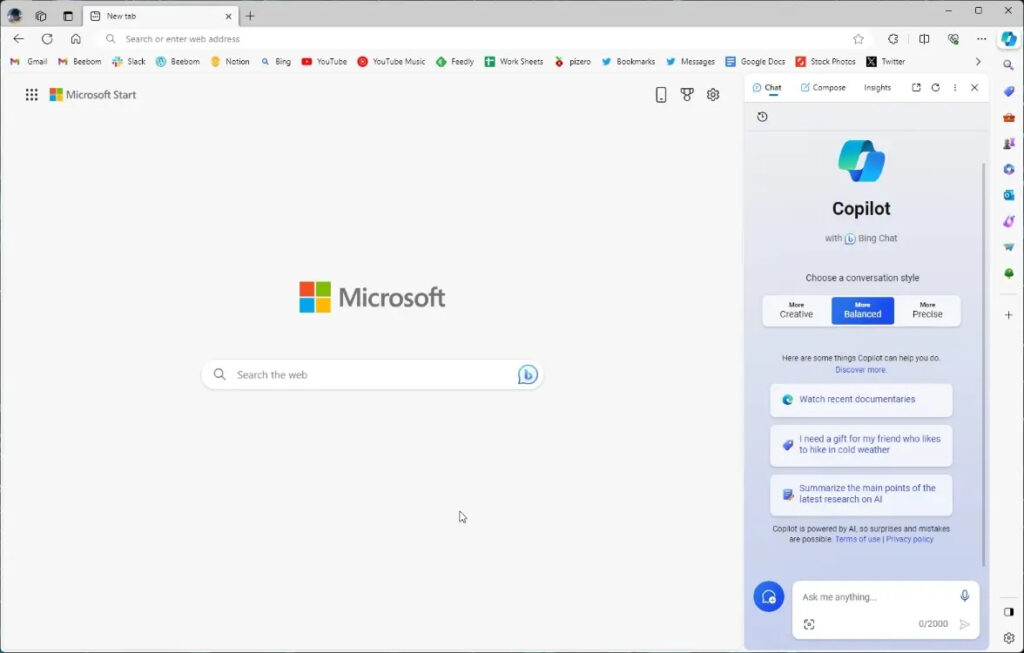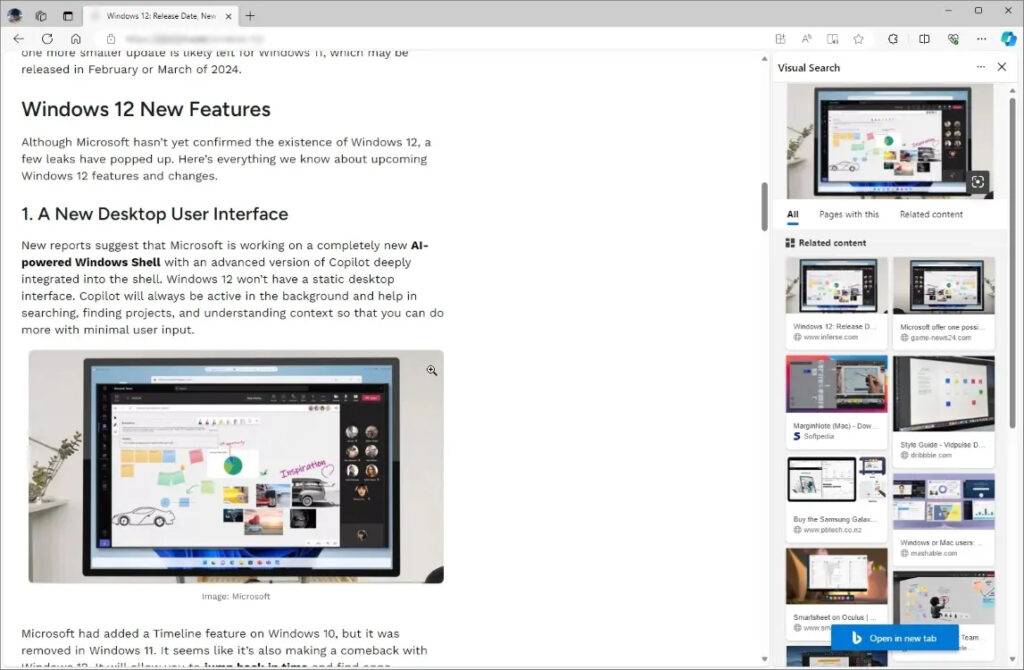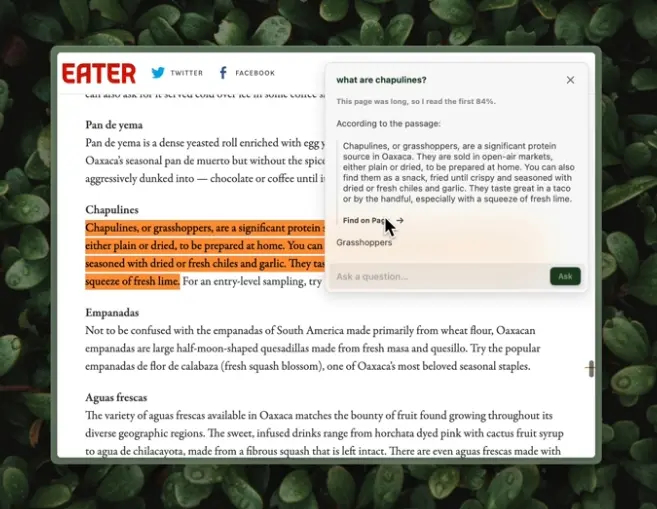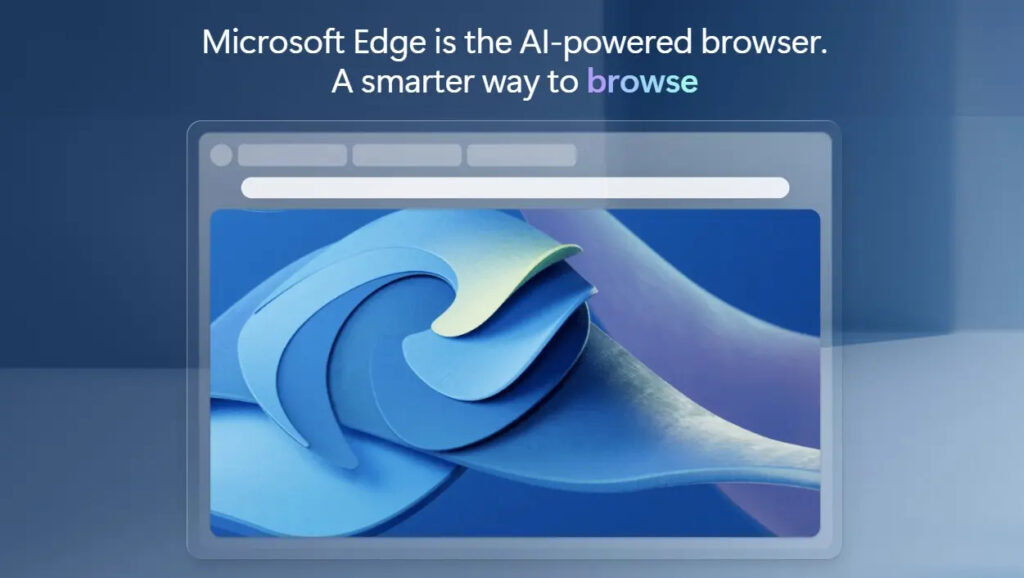
During the Google I/O keynote in May 2023, the term “AI” was emphasized over 140 times, resulting in a 5% surge in the share price of Alphabet, Google’s parent company. Similarly, Microsoft’s earnings call in 2023 saw the mention of AI 50 times, contributing to a 9% increase in the stock by the day’s end.
These occurrences suggest that major tech companies are increasingly using the term AI strategically to attract investors, often prioritizing the mention of AI over the introduction of substantial products powered by artificial intelligence. Notably, Microsoft has been particularly enthusiastic about labeling its products as ‘AI’ innovations.
A notable example is Microsoft Edge, which the company has been referring to as an ‘AI Browser‘ for a considerable period. Microsoft has adopted an assertive marketing approach, actively promoting Edge as the ‘AI Browser’ across various platforms, including the Play Store, iOS App Store, and its official website.

Highlighting AI Capabilities in Microsoft Edge
Certainly, Microsoft Edge incorporates the Copilot chatbot, leveraging the potent GPT-4 model from OpenAI (limited to the “Creative” mode). However, this feature doesn’t inherently categorize Edge as an AI Browser. Copilot, despite its capabilities like summarizing webpages, generating drafts, uncovering key insights, and creating images, feels more like a standalone chatbot integrated into Edge rather than an integral part intricately woven into the browser itself.
It’s worth noting that these functionalities are not exclusive to Edge, as various GPT-powered extensions on browsers like Chrome offer similar capabilities.

Indeed, the versatility of Microsoft Copilot (visit) extends beyond Edge, allowing users to access its functionalities in various browsers. Furthermore, Copilot supports a selection of plugins, akin to ChatGPT plugins. The point being, there are limited native AI-powered features within Edge that genuinely define it as an ‘AI Browser.’
For instance, Edge’s Visual Search continues to utilize Bing’s VQA system, without leveraging the advanced multimodal capabilities of GPT-4V. Even when Copilot is active on the screen in Edge, capturing a screenshot doesn’t prompt Copilot to initiate visual analysis using its AI model. This underlines the notion that Edge’s integration of AI features is not as intrinsic and comprehensive as the ‘AI Browser’ designation might imply.
This is where the disparity becomes more evident. Copilot falls short in creating a seamlessly integrated and interwoven AI experience within Edge.

Notably, even though Chrome boasts a built-in image search powered by Google Lens, acknowledged to be superior to Bing Visual Search, Google refrains from labeling Chrome as an AI Browser.
Several noteworthy AI features in Edge include Read Aloud, Translate, auto-naming tab groups, smart search, and text prediction. However, with the exception of Read Aloud, these features are somewhat niche and have limitations in their effectiveness.

Translate, for instance, is a feature available on other browsers, making it less distinctive. Auto-naming tab groups through AI is a relatively minor feature, offering limited impact. Smart search, which utilizes AI to provide suggestions for typo-ridden search queries, is decent but not groundbreaking. Text prediction, while present, is often constrained, as it doesn’t function in many text fields across the internet.
Furthermore, it’s worth noting that, apart from Copilot, most of these native AI features are absent from the Android and iOS versions of Edge. This raises questions about the validity of labeling it as an AI Browser on the Play Store and App Store, as the comprehensive AI experience is somewhat limited on these mobile platforms.
Exploring AI Innovations in Alternative Browsers
When we examine the AI advancements in other browsers like Arc or Opera, the contrast becomes even more pronounced. Arc, for instance, boasts Max AI features that allow users to employ the “Ctrl + F” keyboard shortcut for a descriptive search, instantly retrieving answers from the current webpage along with annotations. This exemplifies a seamless integration of native AI within the browser.

Moreover, Arc’s AI capabilities extend to hovering the mouse over a link, generating a snippet from the webpage without the need to open it. Additionally, it intelligently renames downloaded files, contributing to better organization and easier retrieval.
Similar to Edge’s Copilot, ChatGPT is conveniently accessible directly from the command bar in Arc. Notably, the browser goes a step further by intelligently renaming pinned tabs in the sidebar for enhanced usability. While Arc Browser showcases thoughtful design for ease of use and functionality, it’s not explicitly labeled as the AI browser of the future.
On the other hand, Opera features the Aria chatbot integrated into the browser, powered by both OpenAI and Google AI models. Beyond chatting with Aria, users can seamlessly rephrase and summarize content. Noteworthy is Opera’s efficiency in word definitions – while Edge requires two clicks, Opera allows users to find meanings and synonyms with just a single click.
Microsoft should dial back on its marketing efforts.
For Edge to truly earn the title of an AI browser, Microsoft should prioritize enhancing the overall intelligence of the user experience instead of simply adding standalone AI features. The absence of contextual AI menus or action buttons that can quickly provide meaningful snippets for links, images, or videos is a notable gap.
Copilot, for instance, lacks the capability to access Outlook emails or Calendar to perform intelligent actions. Numerous such shortcomings in the user experience and a lack of innovative ideas need addressing before Edge can genuinely be deemed an ‘AI Browser.’

Considering Microsoft’s historical approach, the company excels at recognizing trends and allocating substantial resources (bolstered by its major investment in OpenAI). However, there’s a pattern of either mishandling the product or realizing later that few users engage with the features, leading to the winding-down process. This pattern has been evident with promising products like Cortana, Zune, HoloLens, and Windows Phone.
It’s crucial for Microsoft to recognize that Edge is, fundamentally, a web browser, and there are inherent limitations in delivering extensive AI experiences through this platform.
While Edge stands out as a commendable browser, Microsoft’s strategic move to the Chromium engine has proven to be a wise decision. However, in its efforts to rival Chrome, Microsoft has recently been incorporating an abundance of features and tools into Edge. The current emphasis on AI marketing appears to be heading toward an excessive trend, reminiscent of the past era of annoying pop-ups in Bing search and on Windows.
It’s imperative for Microsoft to acknowledge that, fundamentally, Edge is a web browser. There are inherent limitations in pushing the boundaries of meaningful AI experiences through this platform. Even as Microsoft aims to integrate AI features across its core apps, especially with the anticipated release of Windows 12 later this year, the company should focus on embedding compelling AI experiences within Edge. This would make users hesitant to switch away from the browser. The question remains whether this transformation will materialize in 2024, and opinions on the matter are welcome in the comments below.

0 Comments